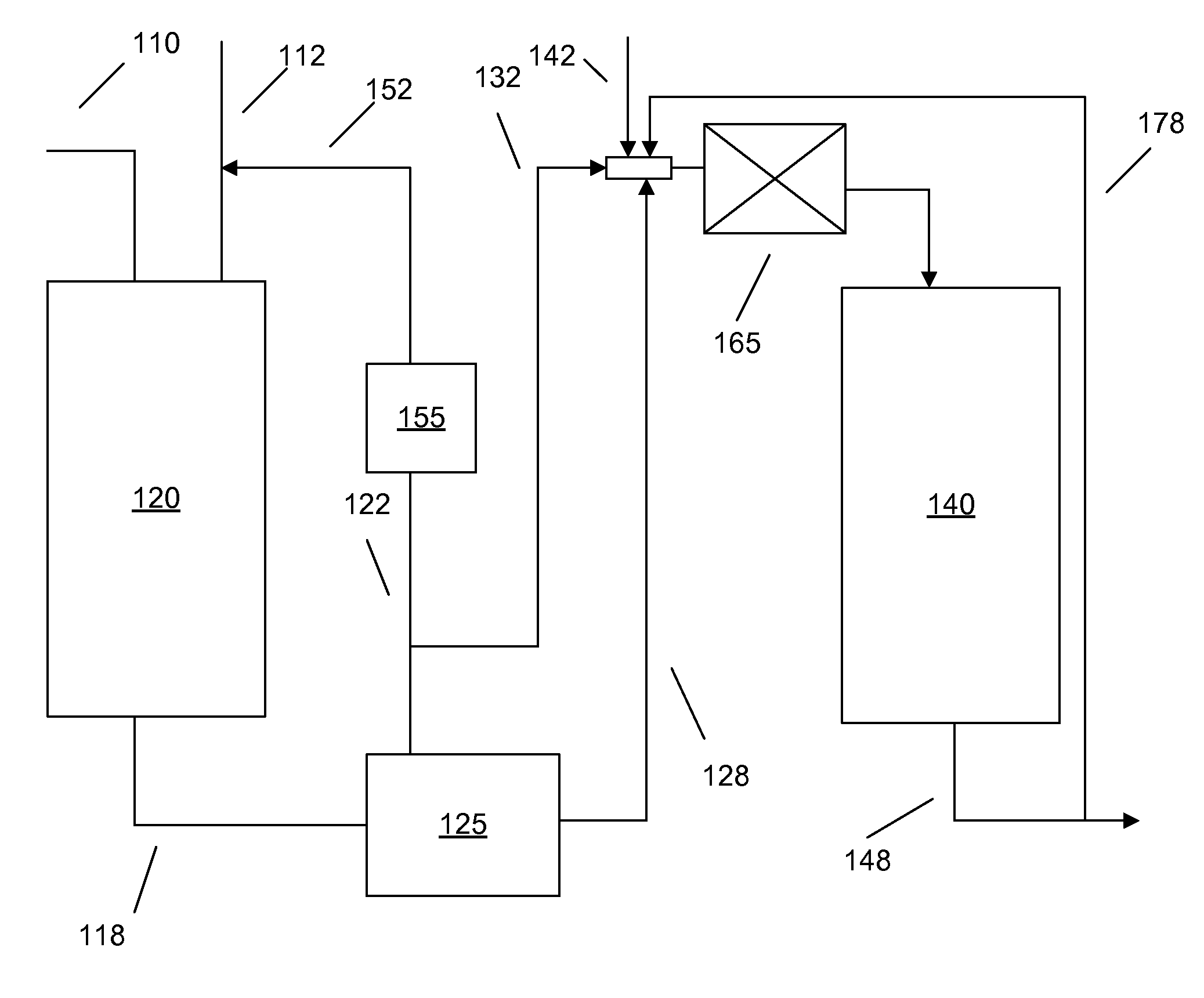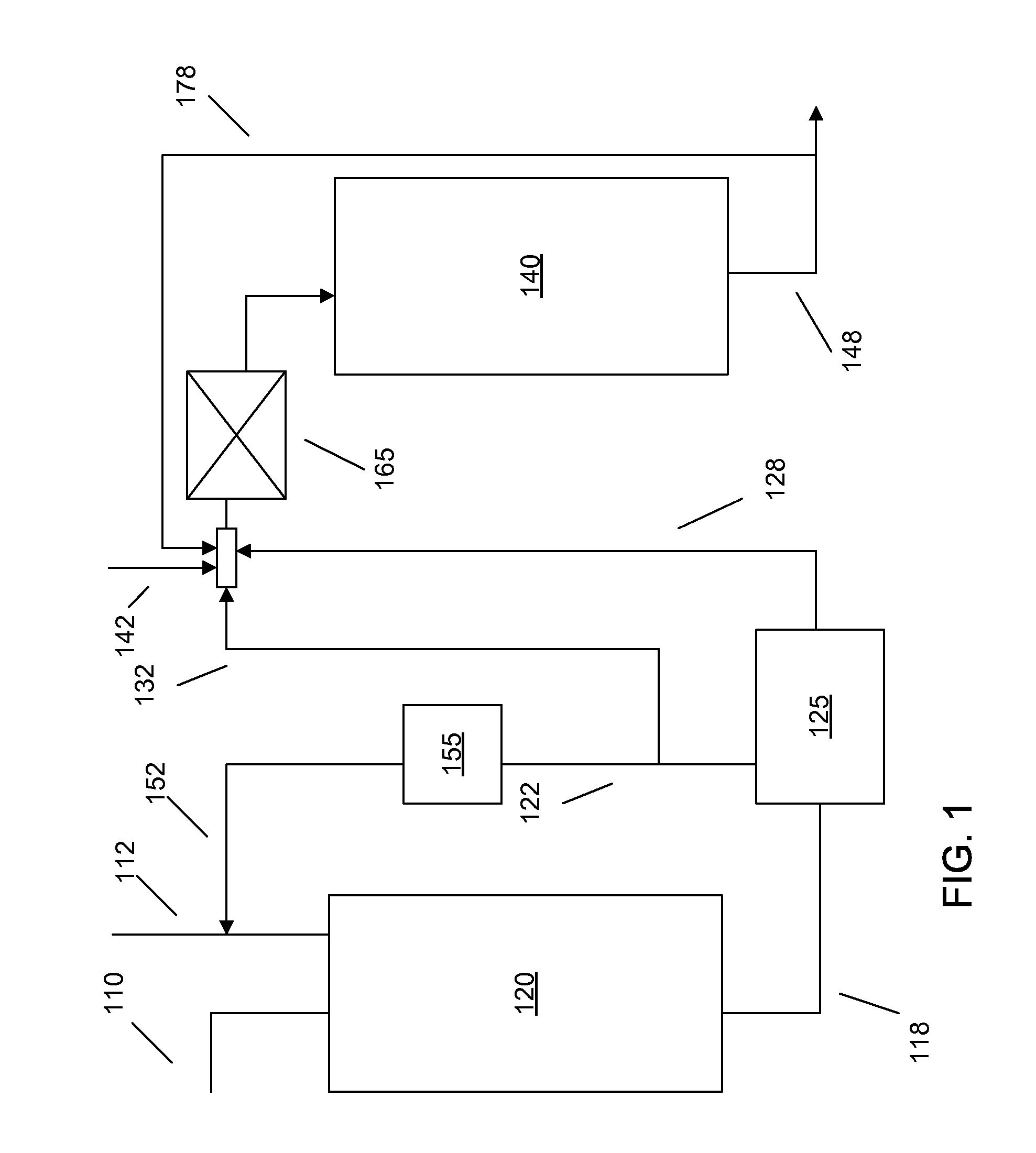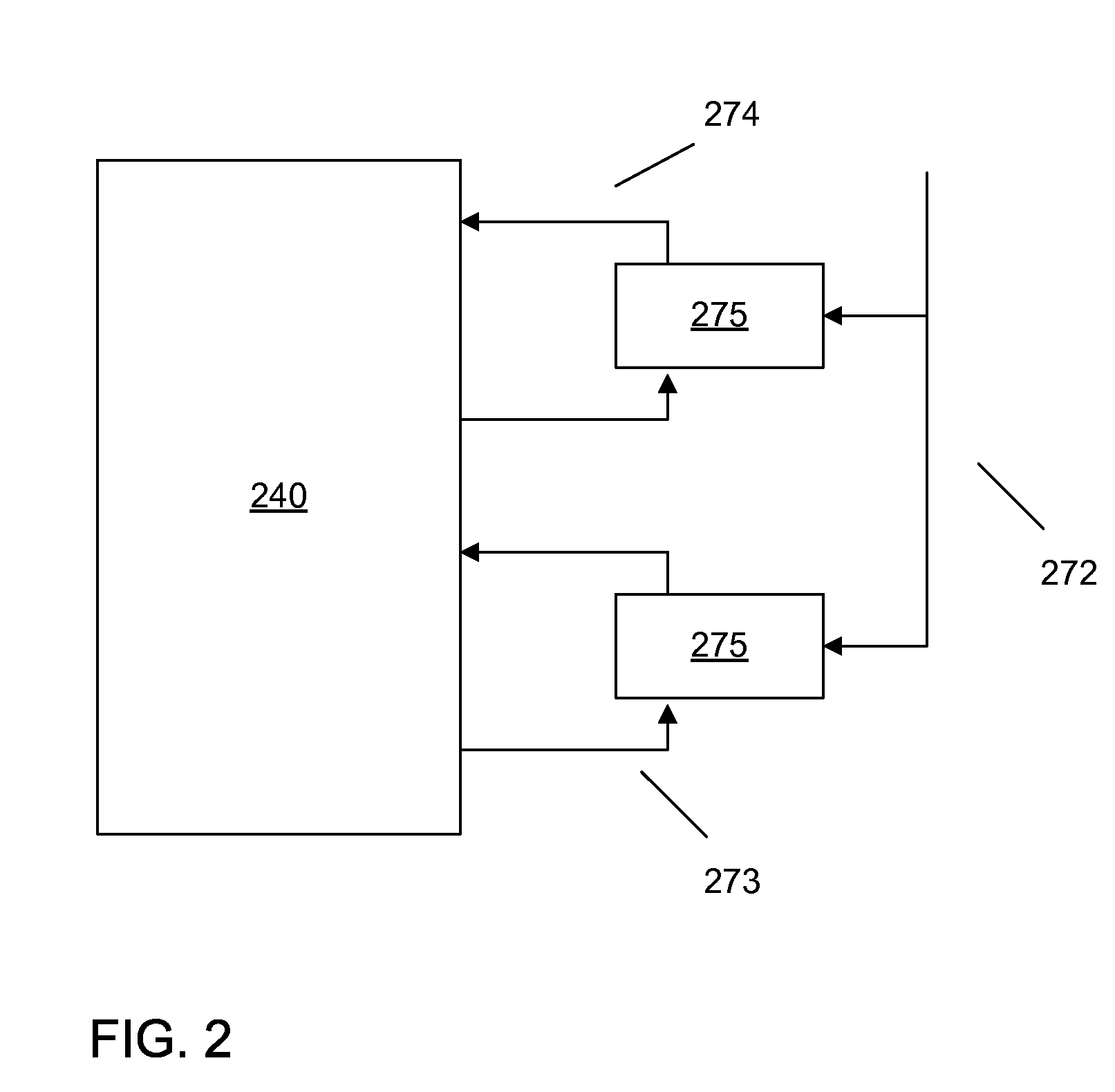Liquid phase distillate dewaxing
a distillate and liquid phase technology, applied in the field of feeds hydroprocessing, can solve the problem of limiting the flexibility of a refinery to change the products, and achieve the effect of improving the flexibility of the refinery
- Summary
- Abstract
- Description
- Claims
- Application Information
AI Technical Summary
Benefits of technology
Problems solved by technology
Method used
Image
Examples
example 1
[0076]The following is a prophetic example. A heavy atmospheric gas oil is selected as a feedstock. The feedstock has a boiling range from about 225° C. to about 440° C. The cloud point of the feedstock is about −4° C. The sulfur content of the feed is about 4000 wppm. The feed is hydrotreated in a trickle-bed reactor under effective hydrotreating conditions. The catalyst includes nickel and molybdenum on an alumina support. The hydrotreated effluent is then separated into a liquid stream, a gas phase stream for recapture of recycled hydrogen, and a side stream containing hydrogen and H2S. The sulfur content of the hydrotreated liquid stream is about 10 wppm.
[0077]The hydrotreated liquid stream and a make-up hydrogen stream are mixed in a static mixer to dissolve hydrogen in the liquid stream to approximately the solubility limit. A recycled product stream from the liquid-continuous reactor is also mixed with the hydrotreated liquid stream in about a 1:1 ratio, to increase the amoun...
example 2
[0079]Three experiments were conducted to investigate dewaxing of a hydroprocessed distillate in a trickle-bed unit. The following examples are provided to illustrate the impact of H2S on aromatics saturation and hydrogen consumption. While the experiments in Example 2 were conducted in trickle-bed reactors, the same relationship between H2S and hydrogen consumption is expected to exist in liquid-continuous reactors.
[0080]In this example, dewaxing was performed on two types of feeds. Column A of Table 1 shows the properties of a hydroprocessed distillate feed. The feed in Column A has a relatively low content of both sulfur and nitrogen. The aromatic saturation occurring for this feed during dewaxing can be used as a baseline for comparison purposes.
[0081]Column B of Table 1 shows the properties of a feed that includes contaminants in the form of sulfur and nitrogen. In order to simulate the effect of using a slip stream of product gas from the hydroprocessing unit as treat gas to t...
PUM
| Property | Measurement | Unit |
|---|---|---|
| temperature | aaaaa | aaaaa |
| total pressure | aaaaa | aaaaa |
| total pressure | aaaaa | aaaaa |
Abstract
Description
Claims
Application Information
 Login to View More
Login to View More - R&D
- Intellectual Property
- Life Sciences
- Materials
- Tech Scout
- Unparalleled Data Quality
- Higher Quality Content
- 60% Fewer Hallucinations
Browse by: Latest US Patents, China's latest patents, Technical Efficacy Thesaurus, Application Domain, Technology Topic, Popular Technical Reports.
© 2025 PatSnap. All rights reserved.Legal|Privacy policy|Modern Slavery Act Transparency Statement|Sitemap|About US| Contact US: help@patsnap.com



